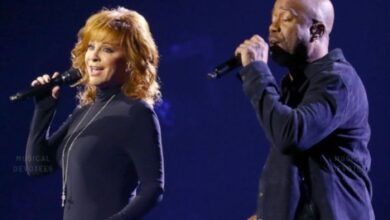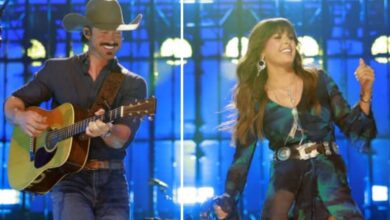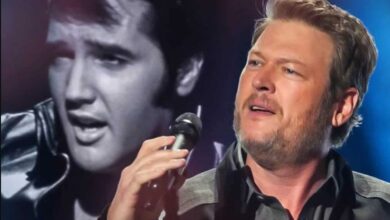Sugarloaf’s ‘Green-Eyed Lady’ Brings Jazz-Rock Fusion to the Forefront in 1970
In the fall of 1970, Green-Eyed Lady by Sugarloaf emerged as a defining track of the early ‘70s rock scene, blending jazz-inspired improvisation with the raw energy of psychedelic rock. The song’s hypnotic bass groove, extended organ solos, and atmospheric guitar work helped it stand out in an era dominated by blues-based hard rock. Released as the lead single from Sugarloaf’s self-titled debut album, Green-Eyed Lady quickly climbed the charts, peaking at No. 3 on the Billboard Hot 100. It became the band’s signature hit, a track that perfectly captured the musical experimentation of its time while remaining accessible to mainstream audiences.
Sugarloaf was formed in Denver, Colorado, by keyboardist and lead vocalist Jerry Corbetta, who had a background in classical music and jazz before shifting to rock. Corbetta’s versatility as a musician set the foundation for Sugarloaf’s sound, which fused elements of progressive rock, jazz, and psychedelic influences. The band, initially called Chocolate Hair, had to change its name before their debut album was released due to concerns from their record label about potential racial connotations. They settled on Sugarloaf, inspired by a nearby mountain range in Colorado, and soon found themselves on the brink of national success.
The story behind Green-Eyed Lady is one of spontaneity and creative evolution. Corbetta co-wrote the song with bandmate David Riordan and producer J.C. Phillips. Initially, the song was conceived as a jam piece during rehearsals, driven by Corbetta’s intricate organ riffs and Bob Webber’s jazz-inflected guitar lines. As the structure began to take shape, the lyrics—romantic yet mysterious—were added to match the song’s hypnotic feel. The track’s distinctive bassline, played by Bob Raymond, was reportedly inspired by jazz greats like Dave Brubeck, adding an unexpected sophistication to what was otherwise a rock radio hit.
The recording process for Green-Eyed Lady highlighted the band’s improvisational approach. The track’s full-length album version ran over six minutes, featuring extended instrumental passages that showcased Sugarloaf’s jazz-rock tendencies. Corbetta’s swirling Hammond organ, Webber’s fluid guitar work, and the steady yet intricate drumming of Bob MacVittie gave the song a dynamic quality that was uncommon in mainstream rock at the time. The single version, however, was edited down to just over three minutes to fit radio formats, stripping away some of the improvisational flourishes but retaining its core appeal.
Upon its release, Green-Eyed Lady received widespread acclaim for its musicianship and hypnotic groove. While many songs in 1970 were leaning towards either hard rock or folk-inspired storytelling, Sugarloaf’s hit found a middle ground, offering listeners a blend of progressive jazz elements within a structure palatable to pop audiences. It quickly gained momentum on AM radio, becoming a staple of the emerging FM rock stations that favored longer, more experimental tracks. The song’s No. 3 peak on the Billboard Hot 100 made it one of the highest-charting progressive rock-leaning singles of the time.
Beyond its immediate success, Green-Eyed Lady played a role in shaping the perception of jazz influences in rock music. While bands like Chicago and Blood, Sweat & Tears were incorporating horns and big-band elements into their rock sound, Sugarloaf demonstrated that jazz sensibilities could exist within a more stripped-down, keyboard-driven format. The song’s success encouraged other progressive rock bands to explore extended instrumentals and complex time signatures while still aiming for radio-friendly appeal.
For Sugarloaf, Green-Eyed Lady was both a blessing and a curse. While it established them as a formidable force in rock music, they struggled to replicate its success. Their later hit, Don’t Call Us, We’ll Call You, reached No. 9 on the Billboard charts in 1975 but didn’t achieve the same level of cultural impact. As the decade progressed, the band found it difficult to sustain momentum, eventually disbanding in the late ‘70s. However, Green-Eyed Lady ensured that Sugarloaf’s name would never be forgotten in rock history.
The song’s influence extended beyond Sugarloaf’s own career, as its hypnotic bassline and swirling organ solos became a reference point for later artists. Elements of Green-Eyed Lady can be heard in bands that followed, particularly those exploring the intersection of rock and jazz. The song also gained a second life through classic rock radio, where its mesmerizing instrumental sections continued to captivate listeners well beyond its initial release.
Over the years, Green-Eyed Lady has been covered and sampled by a variety of artists, further solidifying its status as a rock classic. Blues guitarist Jeff Healey recorded a blistering version that leaned into the song’s improvisational roots, while hip-hop producers have sampled its distinctive bassline in various tracks. Despite its origins in the experimental rock scene of the early ‘70s, the song’s ability to transcend genres has made it a lasting favorite across generations.
At the time of its release, Sugarloaf was riding high on the success of Green-Eyed Lady, but behind the scenes, they faced challenges typical of many one-hit wonders. Label pressures, changing musical trends, and internal band dynamics all played a role in their inability to sustain their early momentum. However, the song’s success proved that even a single track, when executed with originality and skill, could leave a permanent mark on the music landscape.
Decades after its release, Green-Eyed Lady remains a fixture on classic rock playlists, a song that instantly transports listeners back to the dawn of the progressive rock era. Its blend of jazz improvisation and rock energy set it apart from many of its contemporaries, ensuring its place among the defining tracks of the 1970s. It continues to be celebrated as a masterclass in musicianship, demonstrating how a fusion of genres can result in a song that is both intricate and accessible.
Looking at Green-Eyed Lady in hindsight, it’s clear that its enduring appeal lies in its ability to balance complexity with groove. Few songs manage to maintain both artistic integrity and mainstream success, but Sugarloaf achieved that rare feat with this track. It remains an essential listen for anyone exploring the rich, experimental side of early ‘70s rock, a testament to the power of creativity and musicianship in an era that thrived on pushing musical boundaries.



